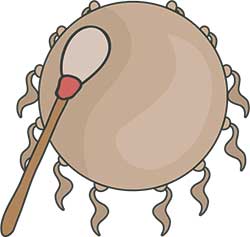“What is man without the beasts? If all the beasts were gone, man would die from a great loneliness of spirit. For whatever happens to the beasts, soon happens to man. All things are connected.”
~ Chief Seattle
This is one of my favorite quotes and two things I experienced within the past week re-confirmed why. The first was an ABC news story on Backyard Animal Sanctuaries where animal control experts estimate that there are currently over 10,000 tigers in private hands being bred and sold for profit. That’s more tigers than there are in the wild in India. And that doesn’t even count the lions and bears and other wild animals being held in these uncontrolled, whim-based environments. My other experience was working at a dog agility trial where it was a pleasure seeing the bond between the people and their dogs. This is truly a situation where the two must work as a team to accomplish a specific goal, based on mutual respect, communication and understanding. These two situations represent the opposite ends of the spectrum of human-animal relationships.
The dog agility scenario clearly illustrates what can be accomplished when the animal is fully engaged in the activity and is encouraged to make decisions and act on them. The human component of the team maps out the course and directs the dog to the appropriate obstacle, trying to assist the dog in running the best possible route in the shortest amount of time. The object is to finish the course in the best possible time, without any faults, such as knocking down a bar on a jump. While it sounds very competitive, each dog-person team is really competing against themselves, constantly trying to better their times and scores. What is remarkable is the spirit of enthusiasm and support each team gets from the other teams involved. I witnessed one team winning their first championship title after accumulating the sufficient number of points during many trialing attempts. Another team had garnered enough points for their eighth championship title. The dog was almost eleven years old. The celebrations that ensued were heart-based and sincere.
On the other end of the spectrum is the backyard animal zoo or sanctuary. The people who run these establishments claim to love and respect their animals, and I’m sure that many do. The problem is how the animals are treated. They spend their lives in cages that do not allow them the freedom of movement required by large wild predatory animals. Their diet does not give them all of the variety that they would consume in the wild. It is an expensive operation to maintain appropriate food, veterinarian care, and safety measures, and when times are tough, the animals pay the price. So it logically follows that the owners tend to exhibit the animals to the public and/or start breeding programs to meet expenses. This compounds the problems as the owner of a cute, playful lion cub bought over the Internet, discovers that a grown, wild, aggressive predator is something else again. Then the animal spends its life in a small cage, going insane because of boredom, abuse and neglect. Public zoos maintain limited populations and specific breeding programs to preserve the integrity of the species and cannot take in all of the animals that people would like to surrender. The lucky ones are rescued and eventually end up in a place like the Wildcat Sanctuary, a non-profit, no-kill rescue facility that provides a natural environment to wild cats in need. True sanctuaries do not buy, breed, sell or exhibit animals to the public. Often, other captive wild animals are killed when they get loose, or hurt someone, or they die prematurely because of poor living conditions.
My point in presenting these two situations is to illustrate the complex nature of human-animal relationships. Animals can and do provide the following benefits for humans: companionship, food, comfort, healing, excitement, a sense of our own wild nature, horsepower, and profit. Humans can and sometimes do provide the following benefits for animals: food, care, habitat, companionship, and comfort. I will be exploring these topics and others in my Human and Animal Relations course at Normandale Community College, June 19, 2012. Join me to discover how animals affect our lives, from serving as companions and helpers to their documented influence on our health and emotional well-being. Where would we be without them?
Mary Stoffel, professional animal communicator, has taught animal telepathy workshops since 1999. Mary’s mission is to facilitate communication and understanding between people and their animal companions using telepathy, essential oils and shamanic healing to help people and animals with holistic health issues.

